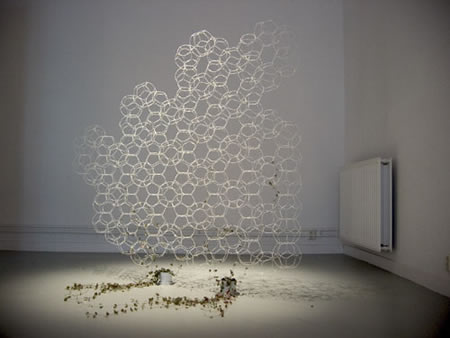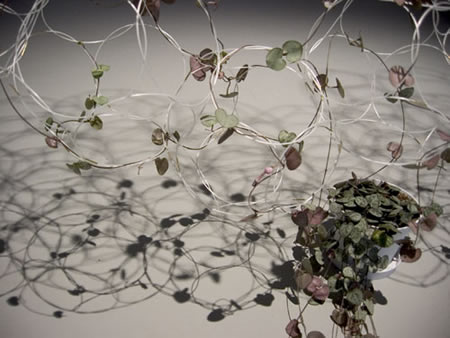"As it becomes increasingly difficult to read the signs of our natural environment in urban, built landscapes we use plants in our work as we consider them to be the most sophisticated of sensors and displays."

An interesting thought. Last year I posted info about Loop.pH's practice and their project digital dawn. Here's their most recent project BioWall which following their work using electronic membranes and textiles inspired by plants is now exploring working with actual plant matter in the hope of growing spaces with a geometric scaffold.

BioWall is a hand woven three-dimensional structure that can be crafted into lace-like walls of any dimension. Springy fiberglass rods are bowed into rings and woven into several dodecahedra that in turn are joined together. The woven fibres create a balance between the rigidity of sheet material and the flexibility of a textile. The structure is based on the principle of self-similarity enabling it to work from the nano to the macro scale. It can be seen in our natural environment in the formation of bubbles, living cells and water molecules.
thanks to Rachel of Loop.pH for letting me know about their new project. It is currently on show till April 9th as part of an exhibition presenting New British Designers at Droog Design's gallery in Amsterdam.

